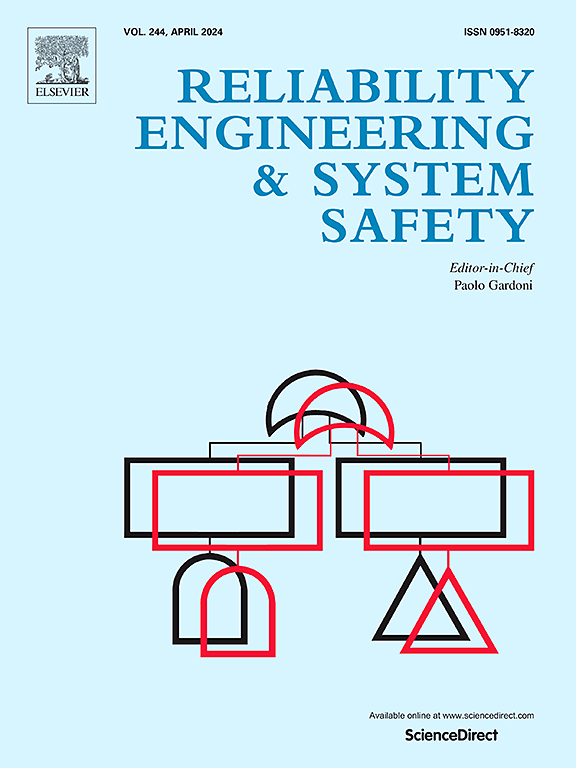Optimal intensity measure and probabilistic seismic demand model for the assessment of historical masonry buildings: application to two case studies
IF 9.4
1区 工程技术
Q1 ENGINEERING, INDUSTRIAL
引用次数: 0
Abstract
This paper presents a probabilistic seismic demand model (PSDM) as a relationship between intensity measures (IMs) and engineering demand parameters (EDPs) for the seismic assessment of two case studies resembling historical masonry buildings. The first one is representative of stiff monumental buildings, and the second of tall and slender masonry buildings. Both structures are modelled in the OpenSees software using three-dimensional macroelements that consider both the in-plane and out-of-plane response of masonry walls. A set of 100 accelerograms are selected to represent the seismic excitation. After full characterization of the seismic input in terms of IMs, both buildings are subjected to the action of these accelerograms to study the maximum structural response in the context of cloud analysis. The most suitable IMs are determined subsequently under the notions of efficiency, practicability, proficiency, and sufficiency. In addition, a composed measure is proposed as a linear combination in logarithmic space of the IMs that exhibit the best coefficient of determination (R2) within the EDP vs. IM regression. This optimal composed measure is determined through machine learning-based Lasso regression. In the final stage of the study, fragility curves are derived to measure the likelihood of exceedance of certain levels of average roof displacement in terms of IM parameters.
历史砌体建筑评估的最优烈度度量和概率地震需求模型:两个案例的应用
本文提出了一个概率地震需求模型(PSDM)作为强度测量(IMs)和工程需求参数(EDPs)之间的关系,用于两个类似历史砖石建筑的案例的地震评估。第一种是僵硬的纪念性建筑的代表,第二种是高大细长的砖石建筑的代表。这两种结构都是在OpenSees软件中使用三维宏元素建模的,这些宏元素考虑了砖石墙的面内和面外响应。选取一组100个加速度图来表示地震激励。在充分描述了IMs方面的地震输入后,两栋建筑都受到了这些加速度的作用,以研究云分析背景下的最大结构响应。随后在效率、实用性、熟练度和充分性的概念下确定最合适的IMs。此外,在EDP与IM回归中,提出了一种组合度量,即在对数空间中表现出最佳决定系数(R2)的IMs的线性组合。该最优组合测度通过基于机器学习的Lasso回归确定。在研究的最后阶段,导出了脆性曲线,以衡量根据IM参数超过某些平均顶板位移水平的可能性。
本文章由计算机程序翻译,如有差异,请以英文原文为准。
求助全文
约1分钟内获得全文
求助全文
来源期刊

Reliability Engineering & System Safety
管理科学-工程:工业
CiteScore
15.20
自引率
39.50%
发文量
621
审稿时长
67 days
期刊介绍:
Elsevier publishes Reliability Engineering & System Safety in association with the European Safety and Reliability Association and the Safety Engineering and Risk Analysis Division. The international journal is devoted to developing and applying methods to enhance the safety and reliability of complex technological systems, like nuclear power plants, chemical plants, hazardous waste facilities, space systems, offshore and maritime systems, transportation systems, constructed infrastructure, and manufacturing plants. The journal normally publishes only articles that involve the analysis of substantive problems related to the reliability of complex systems or present techniques and/or theoretical results that have a discernable relationship to the solution of such problems. An important aim is to balance academic material and practical applications.
 求助内容:
求助内容: 应助结果提醒方式:
应助结果提醒方式:


